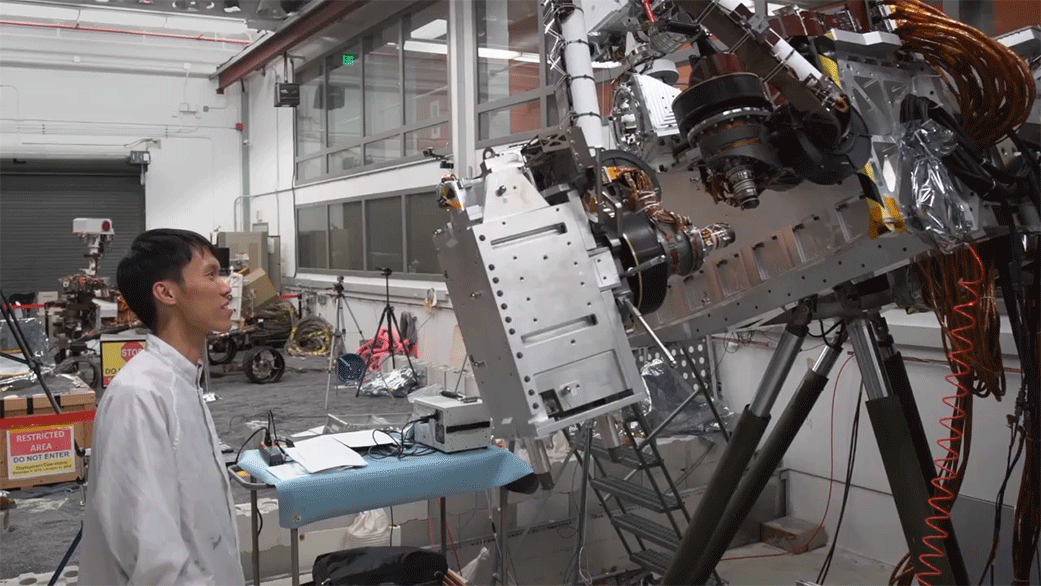Mars 2020 Perseverance Rover Sample Caching System
| Credit | NASA/JPL-Caltech |
|---|---|
| Language |
|
Watch as NASA-JPL engineers test the Sample Caching System on the Perseverance Mars rover. Described as one of the most complex robotic systems ever built, the Sample and Caching System will collect core samples from the rocky surface of Mars, seal them in tubes and leave them for a future mission to retrieve and bring back to earth.
The team is on track to launch Perseverance in July 2020 and land in Mars' Jezero Crater in February 2021. For more information on the Mars 2020 Perseverance mission, please go to: https://mars.nasa.gov/mars2020/
Transcript:
Adam Steltzner: In terms of robots that go into space, the sampling and caching system on the Mars 2020 Mission is the most complicated, most sophisticated thing that we know how to build. This is a system that allows us to take core samples of rocky material on the surface of Mars, carefully seal them in very sterile, clean vessels, for eventual return to Earth. We've been working on the sampling and caching system for seven years, and that's because it's a tough job.
Kelly Palm: We're testing the equipment to make sure that it's going to work, when we get to Mars. It has to function on its own. We have to think of all eventual possibilities, and try them here first. And then, if they don't work, change it now, because we can't make any changes later.
Adam Steltzner: To drill into the rock on Mars, pull out intact core samples, seal them hermetically, and to be all done autonomously by a robot, hanging off the end of a rover, on the surface of Mars, has been a challenge. We've got actually three robots necessary to do the sample and caching systems. Our big robotic arm, out on the front of the rover? That takes our drill, pushes it against the surface. It allows us to take core samples. Then, we put that core sample in the bit carouselー the second robot, that takes that from the robot arm, and puts it down, inside our adaptive caching system. This is the part of the sample and caching system inside the rover. We've got a little tiny robot, a special robot arm, called the SHA. The sample handling arm. It takes the samples out of the bit carousel, and moves them through volume-assessment, image-taking, and eventually, to sealing, and then, replaces the cylinder containing the sample in a storage spot, all on its own, in the matter of a few hours. We have designed on bringing them back in a decade. Mars has been at the fore of our consciousness about the questions of life. Could life exist at one of our nearest neighbors? I think we have a lot to learn, life of no life, about the evolution of our solar system, about our planet, by looking in-depth at rocks brought back from Mars.






























